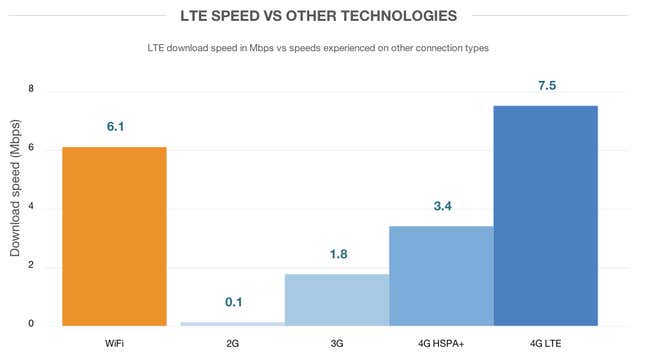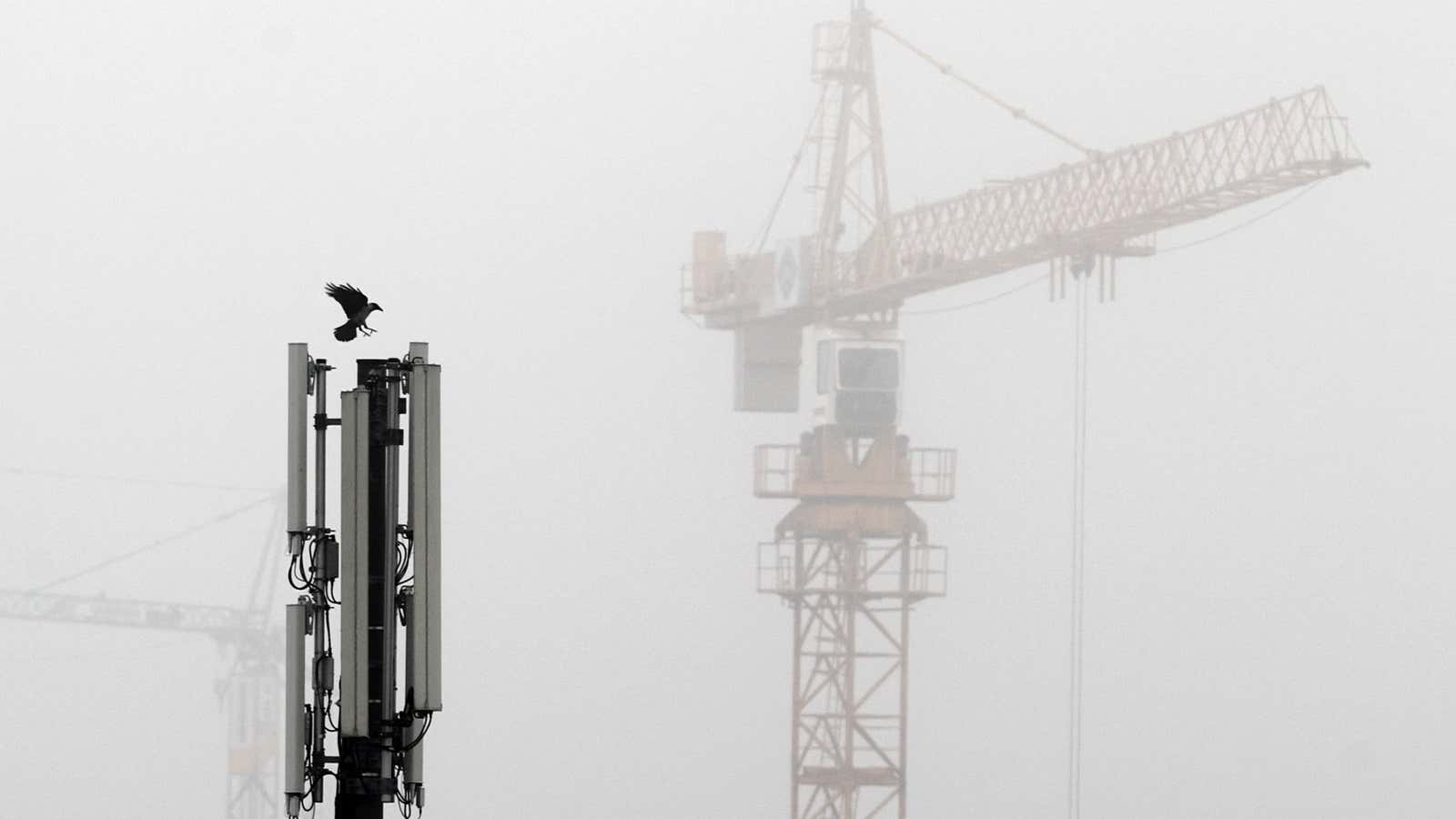For a first-world country, Britain’s mobile internet is surprisingly shoddy. Availability of 4G is patchy and nationwide coverage is still limited to one carrier. Unlike in the US, you have to pay extra to sign up to a plan that allows access to 4G networks. Outside of big cities you can forget about even 3G coverage (and usually the slower EDGE network too). Britain’s mobile network is, in short, not very mobile and not much of a network.
Things are hardly better outside the United Kingdom. The Wall Street Journal reports (paywall) that investment in infrastructure in Europe trails behind America, with the result that only 2% of mobile devices in Europe were connected to 4G last year, compared with 25% in the US. As a result, Europeans consume only half as much mobile broadband as Americans. Brussels is well aware of this. This is what Neelie Kroes, who leads the European Union’s digital agenda, thinks of the networks in the EU’s capital:
But Europe’s laggard infrastructure gives it the chance to leapfrog American speeds in the coming year. Because so much remains to be done, Europe can take advantage of newer technologies that have evolved since the US laid down its network.

EE, a network formed of the agglomeration of Orange and T-Mobile, is testing a new version of 4G LTE (long term evolution, an industry term) which could deliver speeds of up 300 Mbps—or about 10 times as fast as entry-level fibre connections and more than 100 times faster than 3G. Qualcomm, a chip-designer, is already teeing up chips to go into Android devices that can take advantage of faster connections, which the companies demonstrated at the Mobile World Congress this week.
Still, a demo at a trade fair is one thing and a full roll-out is another. For now, Europeans can continue to look wistfully across the Atlantic and dream on.
